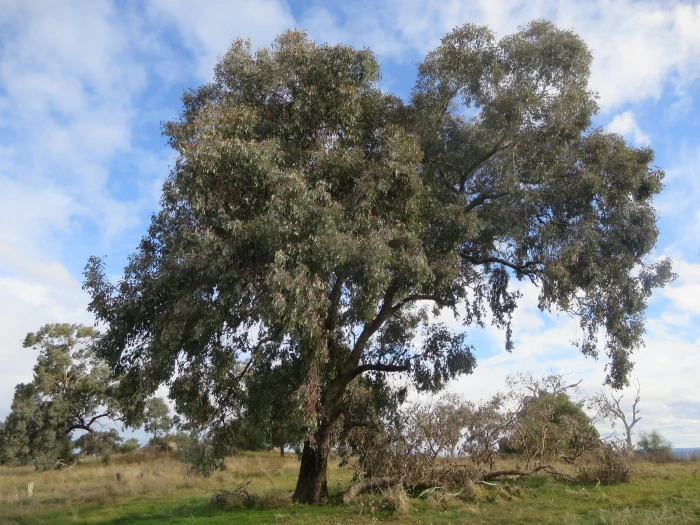White Box
(Eucalyptus albens)
White Box (Eucalyptus albens)
/
/

Max Li
Public Domain Mark 1.0
Image By:
Max Li
Recorded By:
Copyright:
Public Domain Mark 1.0
Copyright Notice:
Photo by: Max Li | License Type: Public Domain Mark 1.0 | License URL: https://creativecommons.org/publicdomain/zero/1.0/ | Uploader: candlebarkeucalypts | Publisher: Flickr |














Estimated Native Range
Climate Requirements
| • Precipitation | 27" - 32" |
| • High Temp. | 82°F - 89°F |
| • Low Temp. | 35°F - 39°F |
Summary
Eucalyptus albens, commonly known as White Box, is an evergreen tree native to temperate woodlands and grassy woodlands in Eastern Australia, particularly the western slopes and plains of New South Wales, as well as adjacent areas in Queensland and Victoria. It can grow up to 98 feet (30 meters) tall and 59 feet (18 meters) wide, with a dense canopy. The bark is a notable feature, being rough and fibrous at the base of the trunk, transitioning to a smooth, white appearance higher up. The foliage consists of lance-shaped leaves, and the tree is known for its spindle-shaped flower buds arranged in groups of seven in leaf axils or at the branch tips. White Box blooms with white flowers from late winter to early summer (August to February), and the fruit are barrel to urn-shaped.
White Box is valued for its drought tolerance and ability to thrive in poor soils, making it suitable for reforestation projects and as a windbreak in rural landscapes. Its striking bark and white flowers make it an attractive ornamental tree for large spaces. In cultivation, it requires full sun and can tolerate low water conditions once established, preferring soils with medium to fast drainage. While it is not commonly used in small gardens due to its size, it is an excellent choice for parks and large properties. Care should be taken as the tree can drop branches, and it is susceptible to psyllids, which can cause defoliation.CC BY-SA 4.0
White Box is valued for its drought tolerance and ability to thrive in poor soils, making it suitable for reforestation projects and as a windbreak in rural landscapes. Its striking bark and white flowers make it an attractive ornamental tree for large spaces. In cultivation, it requires full sun and can tolerate low water conditions once established, preferring soils with medium to fast drainage. While it is not commonly used in small gardens due to its size, it is an excellent choice for parks and large properties. Care should be taken as the tree can drop branches, and it is susceptible to psyllids, which can cause defoliation.CC BY-SA 4.0
Plant Description
- Plant Type: Tree
- Height: 30-60 feet
- Width: 18-40 feet
- Growth Rate: Moderate
- Flower Color: White
- Flowering Season: Winter, Spring
- Leaf Retention: Evergreen
Growth Requirements
- Sun: Full Sun
- Water: Low
- Drainage: Medium, Fast
Common Uses
Bee Garden, Bird Garden, Butterfly Garden, Drought Tolerant, Fragrant, Hummingbird Garden, Low Maintenance
Natural Habitat
Native to temperate woodlands and grassy woodlands in Eastern Australia
Other Names
Common Names:
Scientific Names: Eucalyptus albens, Eucalyptus hemiphloia var. albens, Eucalyptus albens var. elongata
GBIF Accepted Name: Eucalyptus albens Miq.